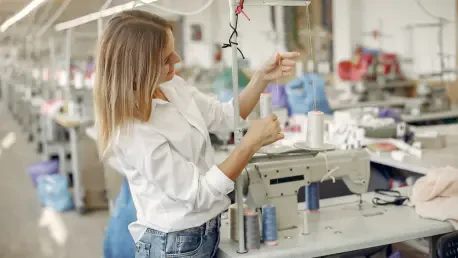In the evolving landscape of the textile industry, significant shifts are underway due to heightened regulatory demands and environmental considerations. With California at the forefront, a collective effort by major retail associations seeks to transform textile management practices through an Extended Producer Responsibility (EPR) initiative. This collaboration aims to address the burgeoning issue of textile waste and position California as a leader in sustainable industry practices.
The Current State of the Textile Industry
The textile industry is currently characterized by a complex network of key players including manufacturers, brands, and retailers. The sector has seen significant technological advancements, impacting everything from production techniques to supply chain logistics. Major market segments vary from fast fashion to luxury goods, each influenced by differing consumer demands and regulatory landscapes. Existing regulations, while numerous, often struggle to comprehensively address end-to-end sustainability, creating a need for innovative approaches such as the initiative spearheaded in California.
Market Dynamics and Industry Trends
Emerging Trends Influencing Textiles
The textile industry is undergoing transformation fueled by shifting consumer behaviors and advancements in technology. On the technological front, innovations such as automated manufacturing and sustainable materials are reshaping industry practices. Meanwhile, consumers are increasingly favoring eco-friendly options, prompting a shift toward more sustainable production and consumption patterns. These trends present novel opportunities for the industry to optimize processes and broaden the appeal of their products in a changing market environment.
Market Projections and Growth Potential
Market data indicates promising growth trajectories for the textile industry, driven by rising demand for sustainable products and technological integration. Future projections suggest that the sector will expand as companies continue to innovate and adapt to new environmental standards. This growth is in part supported by the industry’s strategic focus on sustainability and regulatory compliance, positioning it well for continued success in an evolving global economy.
Challenges within the Textile Industry
Despite the growth potential, the textile industry faces numerous challenges. Technologically, the high cost of implementing sustainable production methods can be prohibitive. Regulatory complexities also pose significant hurdles, as companies must navigate varying laws and standards across different regions. Furthermore, market-driven challenges like fluctuating consumer preferences and competitive pressures necessitate strategic agility. Solutions such as collaborative efforts and investment in research and development could help mitigate these issues.
Regulatory Environment and Impact
The regulatory environment for textiles is marked by stringent laws and standards aimed at promoting sustainability. California’s new EPR law represents a significant shift, requiring producers to actively manage the lifecycle of their textiles. Compliance with such regulations necessitates additional security measures and significant changes in industry practices. The impact of these changes is far-reaching, influencing everything from sourcing to final product disposal, necessitating a reevaluation of traditional industry approaches.
Future Trajectory of the Textile Industry
The trajectory of the textile industry is increasingly aligned with sustainability and innovation. Emerging technologies, such as smart textiles and circular production models, are likely to play pivotal roles in future industry development. Market disruptors such as regulatory changes and evolving consumer preferences will continue to challenge companies to adapt and innovate. The long-term growth areas seem to lie in harnessing these trends to create environmentally responsible products that meet regulatory and consumer expectations.
Conclusion and Strategic Outlook
The initiative spearheaded in California illustrates a critical turning point in how the textile industry manages sustainability. With regulatory compliance as a driving force, the industry stands at the cusp of real transformation. As stakeholders move forward, actionable steps such as the implementation of the PRO and continued investment in sustainable technologies will be key. The future promises opportunities, but it requires strategic foresight as the industry aims to align economic objectives with pressing environmental goals, ensuring its practices evolve to meet 21st-century demands.









